- Home
- Easy Butterfly
Easy Butterfly Painting: Step-by-Step Monarch Butterfly Tutorial
Get creative with this easy butterfly painting tutorial.
Nothing captures the essence of nature's beauty quite like the wondrous Monarch Butterfly, a symbol of transformation, joy and freedom.
Go on a journey of creating your own masterpiece with this guide to drawing and painting a butterfly.
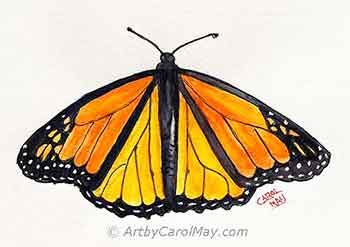 Paint the majestic Monarch.
Paint the majestic Monarch.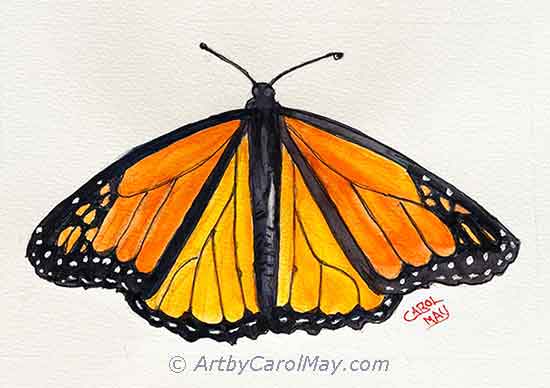 Paint the majestic Monarch.
Paint the majestic Monarch.How to Draw and Paint an Easy Butterfly
This step-by-step tutorial is for budding artists or anyone painting a watercolor butterfly.
How to Draw a Butterfly
Draw the butterfly before jumping into paint. This greatly streamlines the painting process.
What Do Butterflies Look Like?
Knowing butterfly anatomy gives us accurate drawings.
Butterflies have 3 body parts, a head with 2 antennae, the thorax has 4 attached wings and an abdomen RED.
The 2 fore-wings overlap GREEN, the 2 hind-wings BLUE.
6 legs are attached to the thorax. All the legs rarely show in a photo or painting.
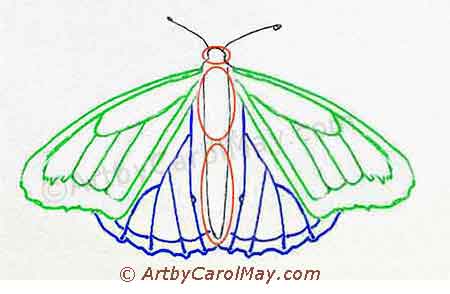 The parts of a butterfly
The parts of a butterflyLightly Do a Pencil Drawing
Your pencil drawing will not be dark like the photos below. They are done with ink so the lines will show in the photos.
The guidelines are red to accentuate them. Do your guidelines with regular graphite pencil.
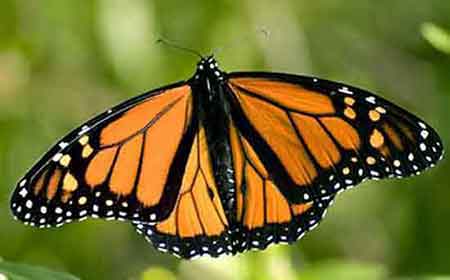 Use a reference photo.
Use a reference photo.It's always good to have a reference for a realistic painting.
This is a male Monarch with scent pouches on his hind wings.
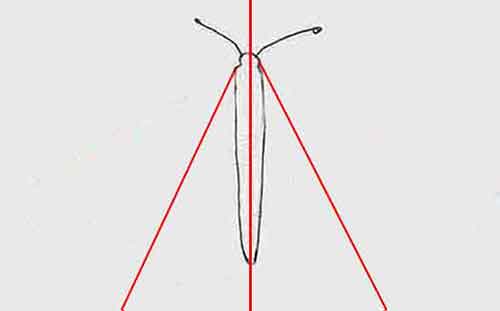 Draw the butterfly's body.
Draw the butterfly's body.Draw a center guideline.
Draw the head and body on the line.
Add guidelines from the shoulders down to about one quarter of the paper's width.
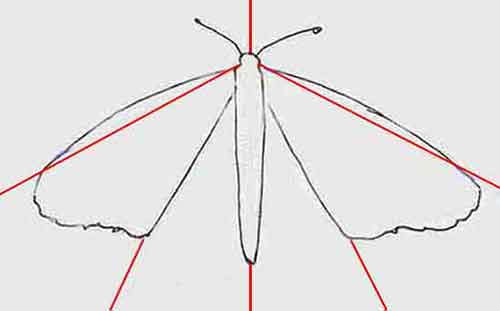 Draw the fore-wings.
Draw the fore-wings.Add 2 more guidelines from the shoulders out to about 2/5 of the paper's height.
Sketch the two top wings.
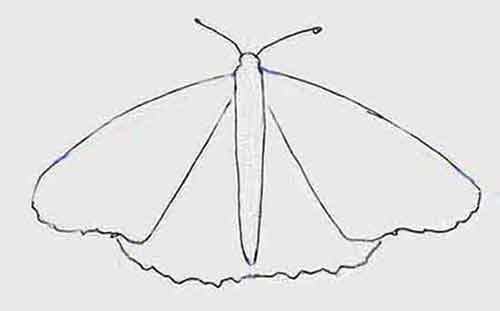 Draw the edge of the hind-wings.
Draw the edge of the hind-wings.Sketch the bottom edge of the two back wings.
Erase the guidelines.
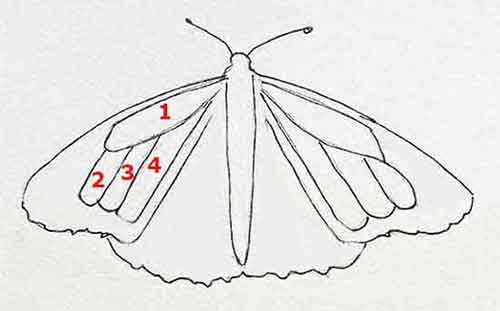 Draw the fore-wing veins.
Draw the fore-wing veins.Draw the veins on the fore-wings.
First draw the large upper vein #1.
Attach the #2,3 and 4 vein sections to the bottom of vein #1.
Notice, these three sections are parallel with the back edge of the wing.
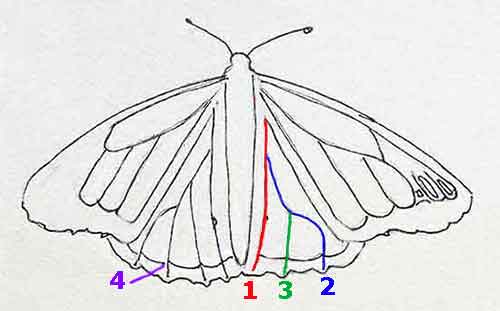 Put the veins on the back wings.
Put the veins on the back wings.Draw veins and trim on back wings.
Start with the long vein next to the butterfly's body, #1.
Attach #2 to vein 1 and vein #3 to 2.
Draw the black trim on both back wings, #4.
How to Paint Your Easy Butterfly
Here's the materials we use:
- 5x8 inch watercolor paper
- #4 and #8 round brushes
- Cadmium Orange and Cadmium Red Light
- Ultramarine Blue and Burnt Sienna
- Water-resistant black ink pen
Start with a Drawing
It's important to start a butterfly painting with a drawing.
Your finished butterfly drawing will look something like this. When your drawing is complete, transfer it to the watercolor paper.
My preference is graphite paper made specifically for artwork. Don't use carbon paper.
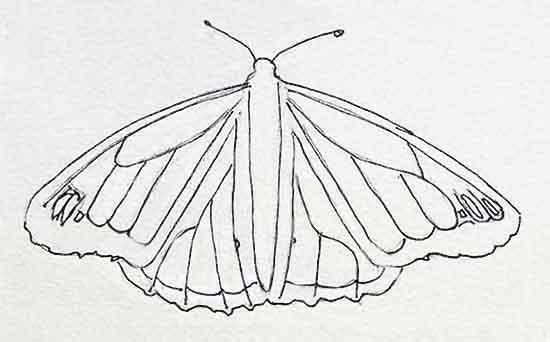 Finish drawing the butterfly.
Finish drawing the butterfly.On the watercolor paper, go over the lines with water-resistant black ink.
Doing the lines with black ink, is what makes this an easy butterfly painting.
We won't have to paint all the fine, black veins later. That makes this painting easy.
Paint the Butterfly in 5 Easy Steps
Butterflies are awesome and it's such a joy to paint them.
Step #1
Use a #8 brush for the entire painting, except for the white spots and small designs on the wing edges. Paint them with a #4 brush.
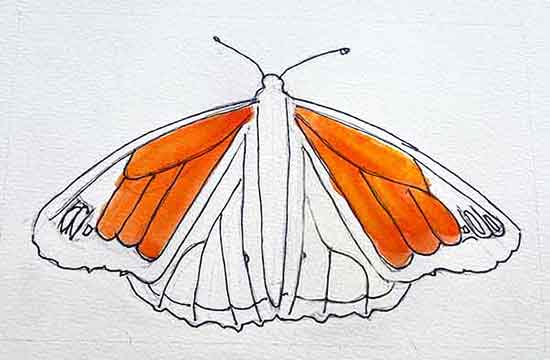 #1 Paint the orange on the fore-wings.
#1 Paint the orange on the fore-wings.Paint the four orange sections of each fore-wing. Paint right over the black veins.
The fore-wings are a redder orange than the hind-wings.
Cadmium Orange is a yellowish orange. We want a reddish orange.
You can make red-orange by mixing a little Cadmium Red Light into Cadmium Orange.
Step #2
Moving to the hind-wings, we paint them with Cadmium Orange. It's a nice bright orange.
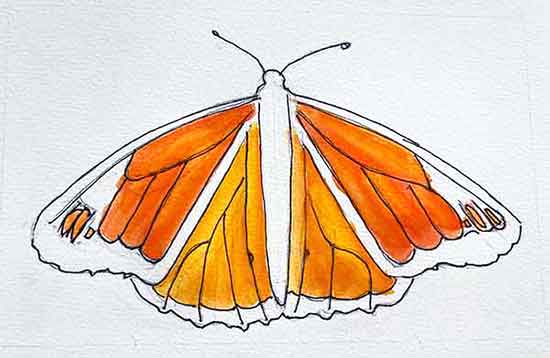 #2 Paint the orange on the back wings.
#2 Paint the orange on the back wings.Don't worry about trying to get the paint on smooth and all the same. Variations make the painting more interesting. They show it's a painting, instead of a photograph.
Winsor Newton cadmium colors do not actually contain any cadmium.
Step #3
Next, we start painting the black parts of the butterfly.
Black is easy to mix with Burnt Sienna and Ultramarine Blue. A mixed black will have some variations that add interest. You certainly may use tube black.
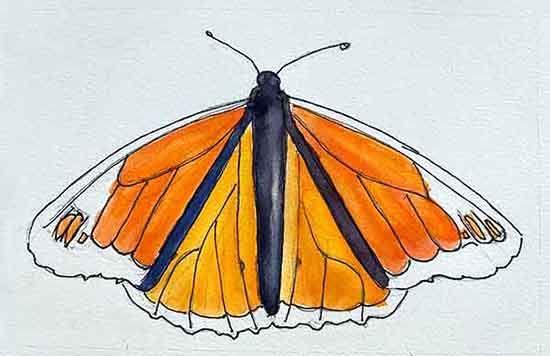 #3 Paint the body and start trimming the wings.
#3 Paint the body and start trimming the wings.Paint the butterfly's head and body. Paint the body darker on the sides. Use less paint on the top of the body to give it a rounded form.
If the body gets painted too dark, dab some of the paint off the top of the body with a clean, damp brush.
Paint the wide black inside edge of the fore-wings.
The black parts look a bit out-of-place at this stage. But as we paint more of the wings, they will fit in.
Recommended colors for your watercolor palette.
Step #4
Continue painting all the black trim on the wings.
It's starting to look like a butterfly. That's the joy of painting.
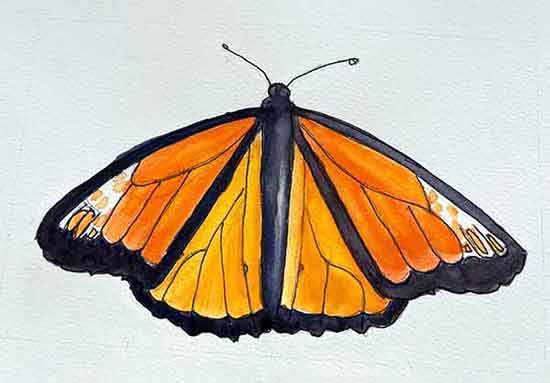 #4 Complete the black edges of the wings.
#4 Complete the black edges of the wings.Step #5
Paint the white designs on wings.
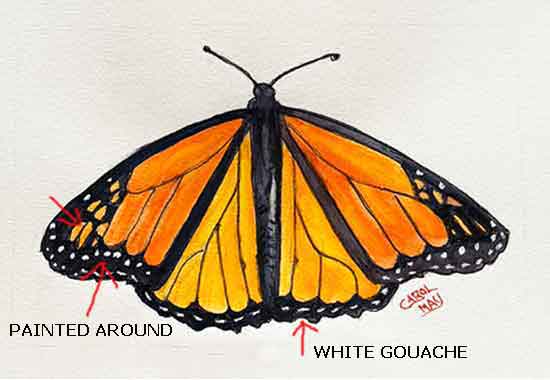 #5 Paint the white spots and dashes.
#5 Paint the white spots and dashes.Paint the white spots and dashes in the black edge of the wings. The white markings may be handled in either of two ways:
- Paint around the spot, leaving the white paper. The spots will look nice and white.
- Paint white spots or dashes on the dried black paint with Titanium White watercolor or white gouache. The white is not as bright, but it's easier than painting around all the spots.
It's your choice, either way is fine. You can see the difference between the two methods in the photo above.
There are more ways to save the white paper.
The Joy of Painting Butterflies!
Have fun with this easy butterfly painting. Paint the Monarch or use the same steps to paint other types of butterflies.
Explore the treasure trove of painting guides, ideas and tips to feed your desire to create.




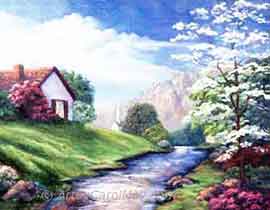 Are you new and want to learn how to paint art? On this page, you’ll find ideas of what to paint, the supplies we really need, the fundamentals of good art (values, color, composition), and beginner-f…
Are you new and want to learn how to paint art? On this page, you’ll find ideas of what to paint, the supplies we really need, the fundamentals of good art (values, color, composition), and beginner-f…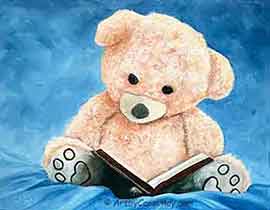 Are you eager to learn how to oil paint? What are the essential supplies for oil painting? What do we need for clean-up and how long do oil paintings take to dry? Learn the rules of oil painting and t…
Are you eager to learn how to oil paint? What are the essential supplies for oil painting? What do we need for clean-up and how long do oil paintings take to dry? Learn the rules of oil painting and t…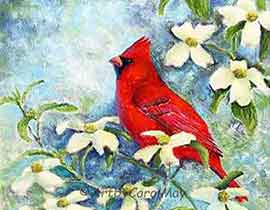 How do we create a focal point in art? Where do we put the focal point? How do we find the focus of an artwork? Should all paintings have a center of interest or can they have more than one? Learn fro…
How do we create a focal point in art? Where do we put the focal point? How do we find the focus of an artwork? Should all paintings have a center of interest or can they have more than one? Learn fro…